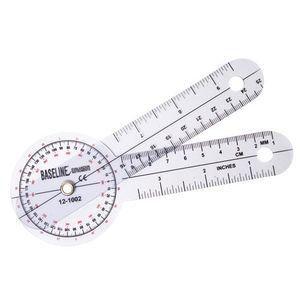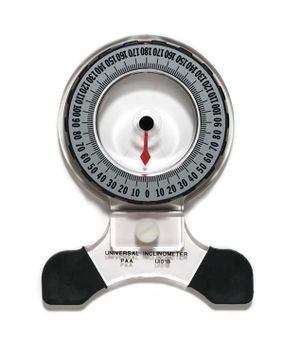Range of Motion
Original Editor - SULEIMAN USMAN Top Contributors - Angeliki Chorti, Lucinda hampton, SULEIMAN USMAN, Kapil Narale, Naomi O'Reilly, Shaimaa Eldib, Vidya Acharya, Mariam Hashem, Kim Jackson, Leana Louw and Shreya Pavaskar
Introduction[edit | edit source]
This is the range through which a joint can be moved, usually its range of flexion and extension, as determined by the type of joint, its articular surfaces, and that allowed by regional muscles, tendons, ligaments, joints and physiologic control of movement across the joint.[1] Range of motion is the extent of movement of a joint, measured in degrees of a circle. It is the Joint movement (active, passive, or a combination of both) carried out to assess, preserve, or increase the arc of joint motion.
Measuring range of motion[edit | edit source]
Devices to measure range of motion in the joints of the body include the Goniometer and Inclinometer which use a stationary arm, protractor, fulcrum, and movement arm to measure angle from axis of the joint.[2] Tape measures can also be used to measure range of motion in some specific parts of the body (lumbar range of motion).
Limited range of motion[edit | edit source]
Limited range of motion refers to a joint that has a reduction in its ability to move. Motion may be limited because of a problem within the joint, swelling of tissue around the joint, stiffness of the muscles, or pain.[3]
Range of motion exercises[edit | edit source]
Range of motion exercise refers to activity aimed at improving movement of a specific joint. This motion is influenced by several structures: configuration of bone surfaces within the joint, joint capsule, ligaments, tendons, and muscles acting on the joint.
There are three types of range of motion exercises
- Passive
- Active
- Active assistive
Passive range of motion[edit | edit source]
Passive range of motion is the movement applied to a joint solely by another person or persons or a passive motion machine. When passive range of motion is applied, the joint of an individual receiving exercise is completely relaxed while the outside force moves the body part, such as a leg or arm, throughout the available range. Injury, surgery, or immobilization of a joint may affect the normal joint range of motion.
Active range of motion[edit | edit source]
Active range of motion is movement of a joint provided entirely by the individual performing the exercise. In this case, there is no outside force aiding in the movement.
Active assisted range of motion[edit | edit source]
Active assist range of motion is described as a joint receiving partial assistance from an outside force. This range of motion may result from the majority of motion applied by an exerciser or by the person or persons assisting the individual. It also may be a half-and-half effort on the joint from each source.
Resources[edit | edit source]
References[edit | edit source]
- ↑ McGraw-Hill Concise Dictionary of Modern Medicine. © 2002 by The McGraw-Hill Companies, Inc.
- ↑ Gajdosik RL, Bohannon RW. Clinical measurement of range of motion: review of goniometry emphasizing reliability and validity. Physical therapy 1987;67(12):1867-72.
- ↑ Magee DJ. Primary care assessment. In: Magee DJ, ed. Orthopedic Physical Assessment. 6th ed. St Louis, MO: Elsevier Saunders; 2014:chap 17 ''Limited range of motion








